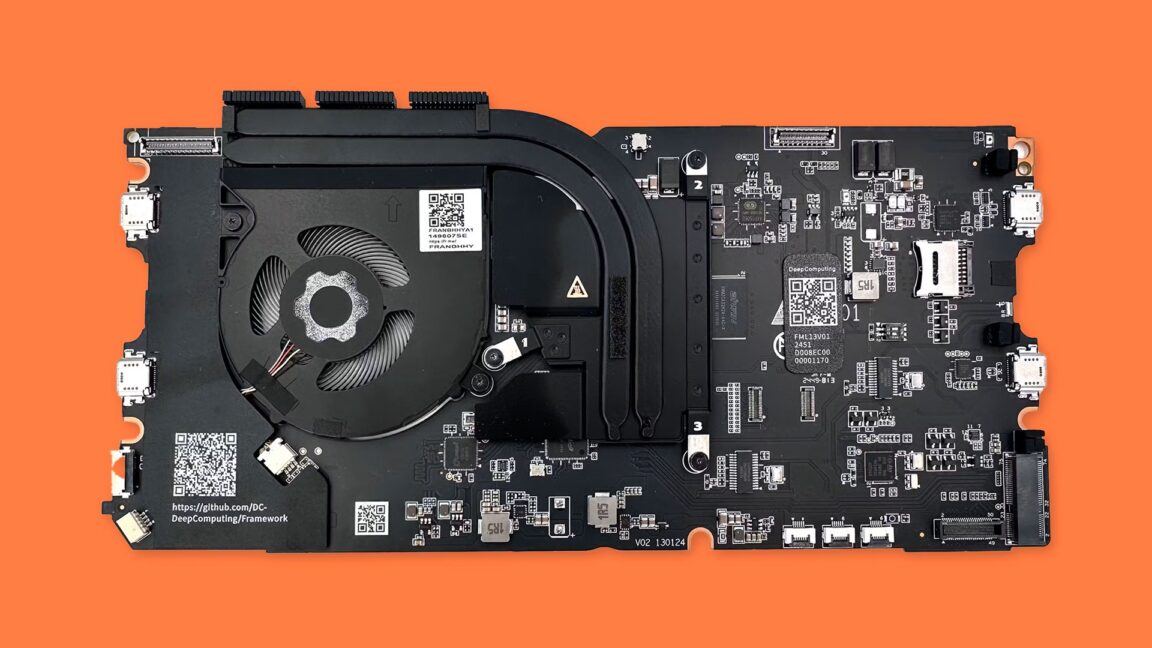Nice to see! Baby steps and all that. Getting RISC-V to a consumer-level state is still a pretty gargantuan task that has a lot of catch-up to do, but it’s walking along its path steadily.
I would have rather seen an ARM Linux board for a more modest cost
If someone who makes ARM hardware wants to make a mainboard, I’d imagine Framework will work with them under the same conditions they’re working with DeepComputing on the RISC-V one.
From what I can see, arm Linux itself is still a very small market so I don’t see how a small company could work on it and make a profit from that. Maybe once it becomes more mainstream and there is a bigger demand for it, they would definitely consider it. I would rather have them focus on what they have and expand their production, cost and sales region at the moment.
. . . arm Linux itself is still a very small market . . .
If ARM is a small market, RISC-V is even smaller.
I personally like when boundaries are pushed, and welcome more independence on x86.
A $200 board with soldered 8GB RAM and 64GB storage.
That’s the future of RiscV. (The soldered down everything part)
How come?
Well, the RISC-V instruction set is open source, but that doesn’t imply a system architecture standard. So there’s not going to be one. The x86 PC became an industry standard basically by accident, an accident that is unlikely to happen again. Hell, even CP/M, the DOS before DOS had to come in different flavors for different manufacturers because the several manufacturers that supported it didn’t build compatible computers.
Microsoft has so much inertia on x86 that it’s probably not going anywhere, and RISC-V will become the new ARM, same cores slapped into whatever the hell the company wanted to build that day. With no standard platforms, there will be no modular accessories. What you’ll get are sealed shut devices with no user serviceability, the RAM and storage soldered to the board and the bootloader stored in on-chip ROM.
Milk-V Oasis Mini ITX board was going to have replaceable RAM, M.2 slot for SSD, and 4x SATA slots. The only reason it didn’t release was because of Sophgo sanctions (They make the SG2380 which was the Oasis was based on)
Sure, it’s technologically possible. Is there even an inkling of a plan to go from “dev kit” to “widely available consumer product?” Because basically the only “widely available consumer products” are locked down playpens like iPhones and such. Even a lot of x86 devices are going to the soldered everything approach.
Is there even an inkling of a plan to go from “dev kit” to “widely available consumer product?”
It’s not a dev kit, it’s meant to be a regular PC with upgradable storage, RAM, and PCIe slot for $120. Milk-V and other RISC-V companies already have widely available consumer products (Milk-V Mars, Banana Pi, etc.), they’re just usually SBCs because that’s what’s easiest to produce and RISC-V is early in development. Remember that the first standard with Vector instructions just came out a few months ago (RVA23), and there’s no point in trying to seriously compete with X86/ARM PCs until you have that.
Even a lot of x86 devices are going to the soldered everything approach.
That right there tells you this is not a RISC-V/ARM problem. It’s just that everyone knows on-SOC memory performs better than DIMM, and manufacturers are starting to offer these to compete with Apple M chips.
I didn’t say it’s a problem inherent to RISC-V; it’s more that anyone who can make the jump to RISC-V (or ARM) will do so in a locked down sealed shut proprietary format like Apple, or doesn’t have the capability of making a platform shift at all like Microsoft. You could make an ATX form factor ARM or RISC-V machine with a lot of processing power and run Linux on it, but who would buy it and for what? That question is why no one makes such a thing.
deleted by creator
Didn’t NT 3.x or 4.x run on a RISC CPU back in the day?
Yes it supported PPC and MIPS, which are RISC platforms.
The NT kernel is built on top of a hardware abstraction layer, which should make it easier to port it to different architectures.

To be fair, most/all kernels are written on a hardware abstraction layer, although lot of that kernel was built off of VMS… 😂
Yeah, porting the kernel is the “easy” part for any OS. Its the user space and building up a software ecosystem for the new architecture that is a pain in the ass.
Alpha, yes, and modern Windows has been ported to ARM.
And MIPS too. NT 3.1, 3.5, 4.0 all saw MIPS, Alpha, and x86 releases.
Boardless? What, like, components connected directly to the chassis instead?
That sounds like ass.




